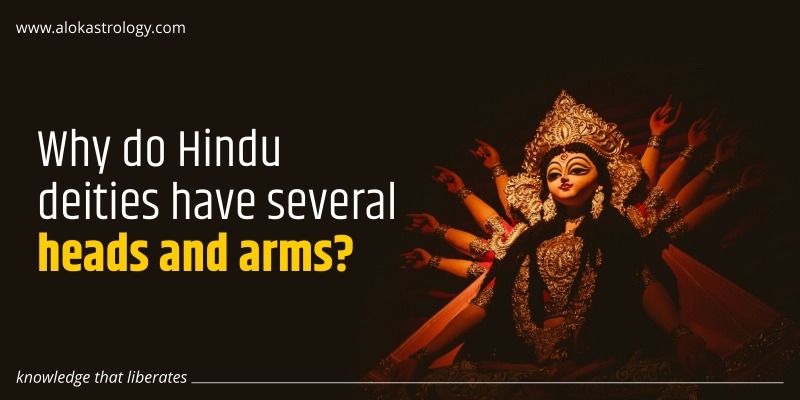Deities in Hinduism are frequently shown as having more than two arms. When they are engaged in combat with cosmic forces, all of these arms are brought into view. The artist’s attempt to convey the omnipotence of Hindu deities through the use of artistic representations of gods in human form with numerous arms might be seen as an example of this. It demonstrates their incredible strength and power that they can carry out a variety of tasks all at once.
Why do Hindu gods have more arms? Get an online astrology consultation by the world-renowned Astrologer Mr. Alok Khandelwal.
The Hindu deities and goddesses often have numerous arms, which is a visual representation of their superior power over mankind.
Each hand is grasping an object that represents a different quality that is associated with the particular deity that the hand represents. Some of the hands are depicted as being empty, but others include various mudras, or positions of the fingertips and palms, that are meant to represent aspects of God. For example, when the hands are pointed toward the bottom, they represent the benevolent nature of God. On the other hand, when the hands are pointing upwards, in the manner of a benediction, they convey the protecting nature of God.
The amount of arms varies depending on the symbolism that is being portrayed. In most depictions, deities are depicted as having four arms, each of which is represented clutching a separate item that carries its own unique meaning. Consider Lord Ganesh, for example.
The Abhay Mudra is a hand gesture that symbolizes fearlessness. The word “mudra” comes from the Sanskrit word “Abhay,” which means “gesture.” The lower right hand of Ganesh, as depicted in this gesture, is meant to represent his grace, blessing, and protection for a person as they travel through life. Ganesh represents detachment, which can be seen as the severance of all attachments. He does this by holding an axe in the upper right hand of his body. He is pulling the followers closer to the spiritual journey while holding a rope in the upper left hand of his dominant hand. It is stated that Ganesh bestows blessings in the form of modak (sweets) on devotees who perform their sacrifices (sadhana) with the modak that he holds in the lower left hand of his figure.
Read Also:- Characteristics of People Born on Monday
Additionally, the deity is sometimes depicted as having more than one head. This image is meant to symbolize the many facets of character that make up the deity in question. For instance, whenever the god Shiva is depicted as having three heads, the face in the middle of the image conveys his core nature, while the faces on either side of it show his blissful and ferocious sides, respectively.
According to ancient Hindu texts, Lord Brahma used to have a single head in the past. Brahma became infatuated with his very own female creation when he used his own body to produce a woman named Shatarupa. Shatarupa was born from Brahma’s womb. The astonishing beauty of the woman was impossible for him to take his eyes off of. Because Shatarupa was experiencing feelings of shyness, she made an effort to avoid his sight by moving away from him on all sides. It is claimed that Brahma formed his FIVE heads in order to follow Shatarupa everywhere she went. Four of these heads faced the cardinal directions (east, west, north, and south), while the fifth head faced above.
This action on the part of Lord Brahma enraged Lord Shiva, and as a direct response, Lord Shiva severed Lord Brahma’s fifth head so that it faced upward. As a result, Lord Brahma is typically shown as having four heads.
The Puranas, much like Hindu mythology, describes certain demons, known as Asura, as having several arms and heads. This portrayal is done to represent the extraordinary power that they possess.
Read Also:- What is Surya Chandra Amavasya Dosha?
